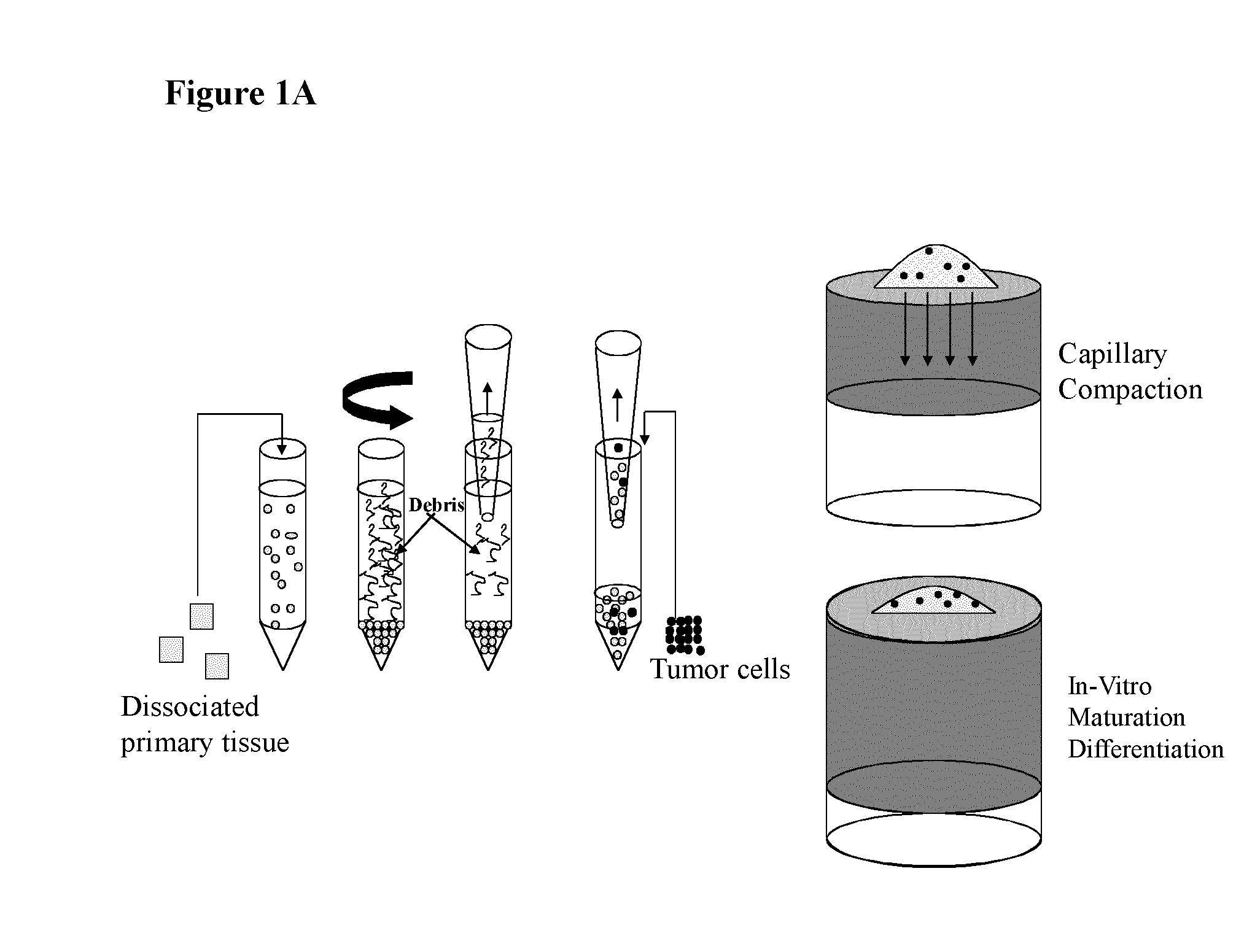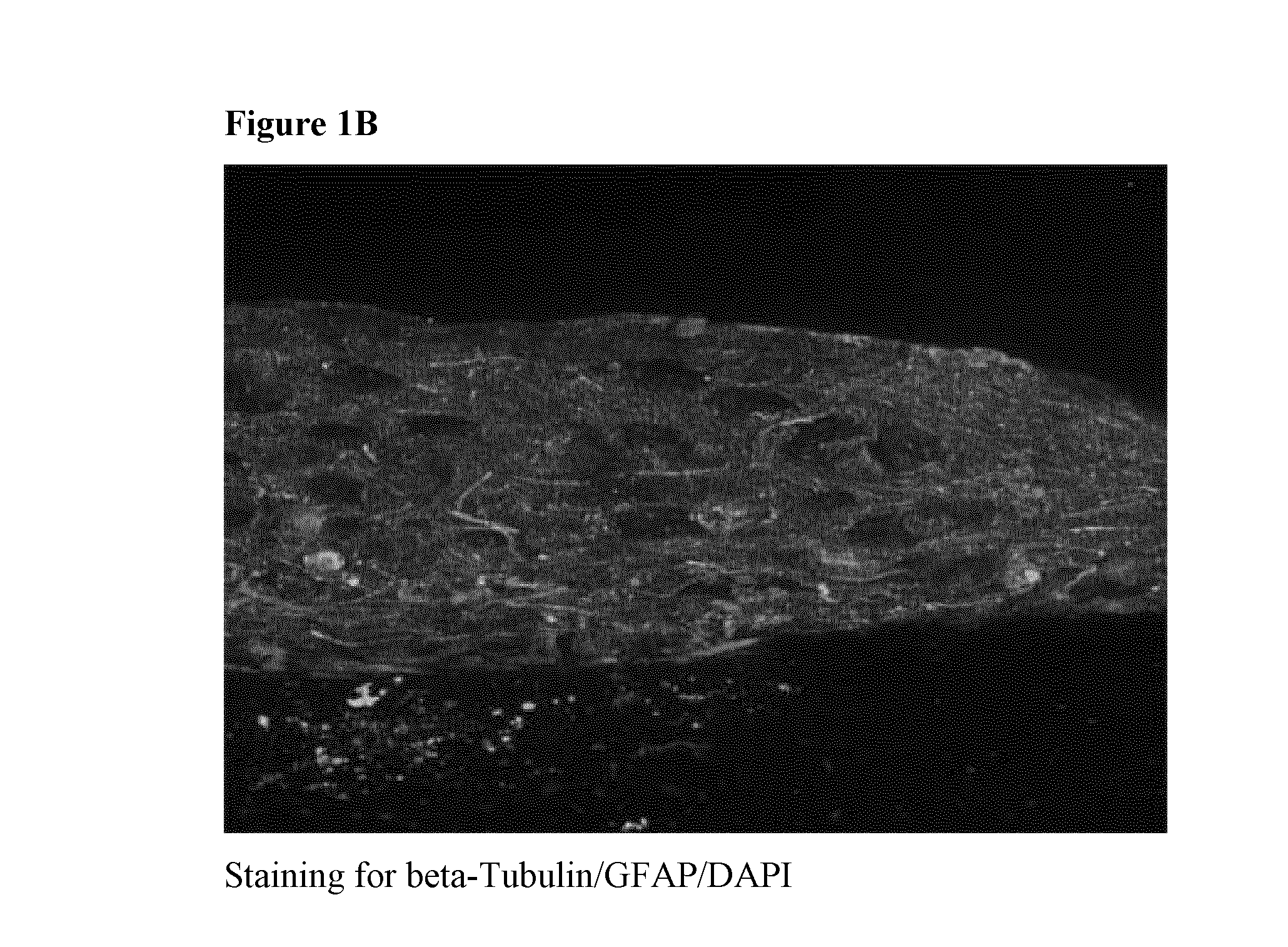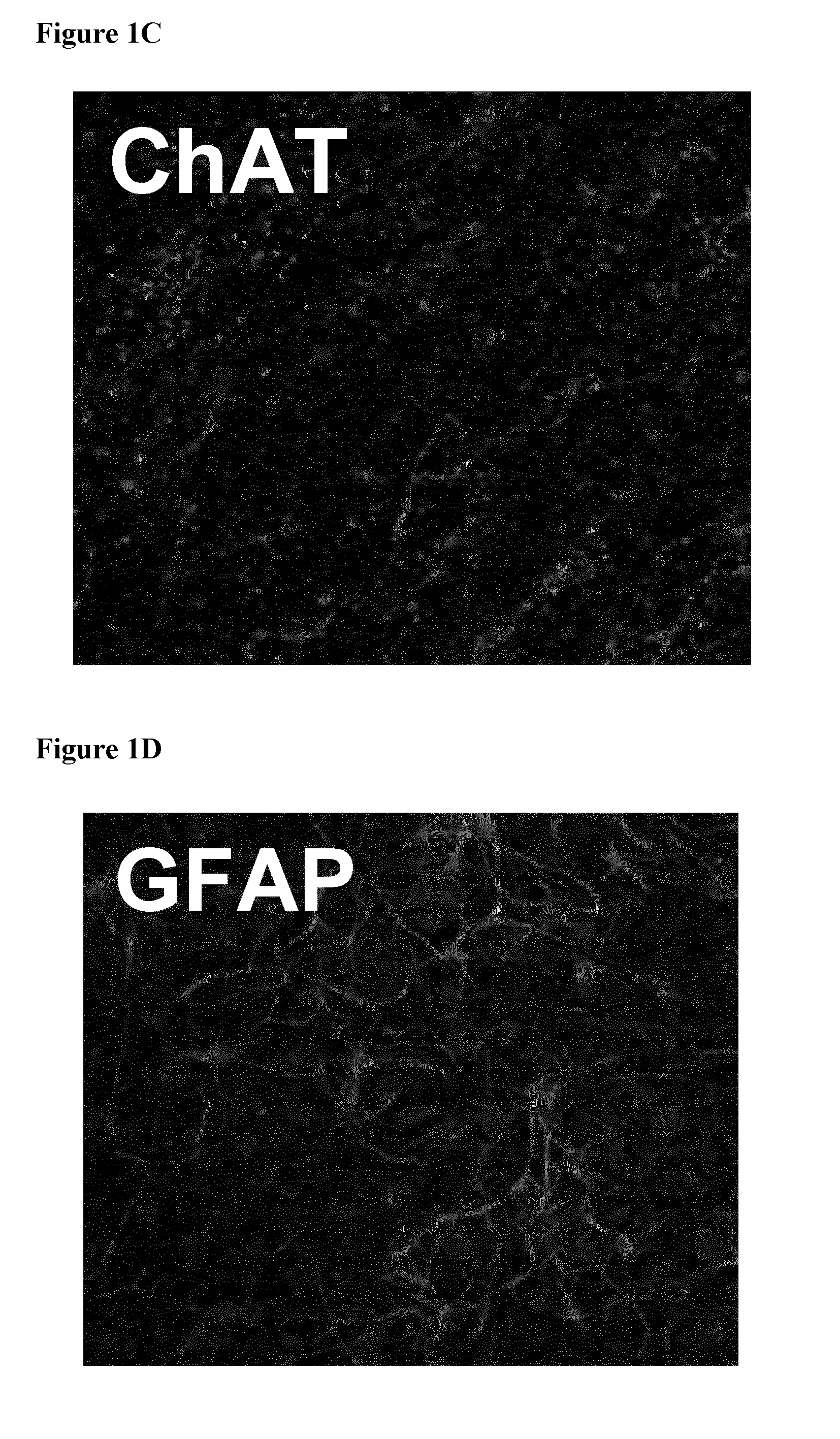Tumour cell and tissue culture
a tissue culture and tumor technology, applied in the field of tumor cell and tissue culture, can solve the problems of poor prognosis of many types of cancer, lack of satisfactory model system for gmb, and development of relevant model systems
- Summary
- Abstract
- Description
- Claims
- Application Information
AI Technical Summary
Benefits of technology
Problems solved by technology
Method used
Image
Examples
example 1
Preparation of Human Tumour Cells
[0128]Human glioblastoma tumour cell lines, LN-18 (ATCC #CRL2610) were cultured and were transfected with either green fluorescent protein (GFP) expressing plasmids or red fluorescent protein (RFP) expressing plasmids. Cells were cultured and plated onto 6 well plates, at 1×105 cells per well, grown overnight and checked to see ˜75% confluence. The cells were transfected with pEGFP-N3 (BD Biosciences cat no #6080-1) using Gene Juice (Novagen cat no #70967-EA) as per manufacturer's protocols. 24 hours after transfection, the cells were selected with Geneticin (GIBCO cat no #10131-019), a population of selected cells were used in the experiments. A population of selected cells were cultured over prolonged periods of time with occasional selection to maintain a population of transfected cells. The expression of fluorescent proteins by the tumour cells allows monitoring of the tumour cells for proliferation and morphological changes. The transfected tumo...
example 2
Preparation of Rat Brain Cells from Isolated Rat Cortex
[0129]The organotypic cultures were produced by preparing dissociated cells from isolated rat cortex. P0 Wistar rats were sacrificed and the brains removed. The cortices were dissected into a Petri dish and chopped into small pieces and put into cold EBSS (GIBCO cat no #24010). The tissue pieces were then triturated very gently. The resultant cell suspension was filtered through a 100 μm mesh filter fitting into a 50 ml falcon tube. The suspension was centrifuged at 1000 rpm / 3 minutes. The viable cells were counted using Trypan blue exclusion and the cell pellet resuspended to 50,000 cells / μl.
example 3
Establishment of 3D Organotypic Cultures from Dissociated Brain Cells
[0130]Dissociated rat brain cortices were allowed to re-aggregate on a semi-porous membrane at an air-liquid interface (cf. FIG. 1, right hand portion). Freshly dissociated brain cells from rat embryo were plated on hydrophilic PFTE membranes placed on media and allow to grow for 20 days. A transverse section of the cell masses obtained was processed for immunofluorescence using markers for neurons (beta-tubulin) and activated astrocytes (glial fibrillary acid protein, GFAP). As shown in FIG. 1B, the staining revealed that both neurons and astrocytes were present in such 3D cultures and that their physiological architecture was preserved (see also FIGS. 1 D, E, F). Cholinergic neurons and nerve terminals were subsequently visualized using an antibody directed against choline acetyltransferase (ChAT; FIG. 1C). As expected, ChAT staining was distributed throughout the whole brain co-culture with specific enrichment i...
PUM
 Login to View More
Login to View More Abstract
Description
Claims
Application Information
 Login to View More
Login to View More - R&D
- Intellectual Property
- Life Sciences
- Materials
- Tech Scout
- Unparalleled Data Quality
- Higher Quality Content
- 60% Fewer Hallucinations
Browse by: Latest US Patents, China's latest patents, Technical Efficacy Thesaurus, Application Domain, Technology Topic, Popular Technical Reports.
© 2025 PatSnap. All rights reserved.Legal|Privacy policy|Modern Slavery Act Transparency Statement|Sitemap|About US| Contact US: help@patsnap.com



